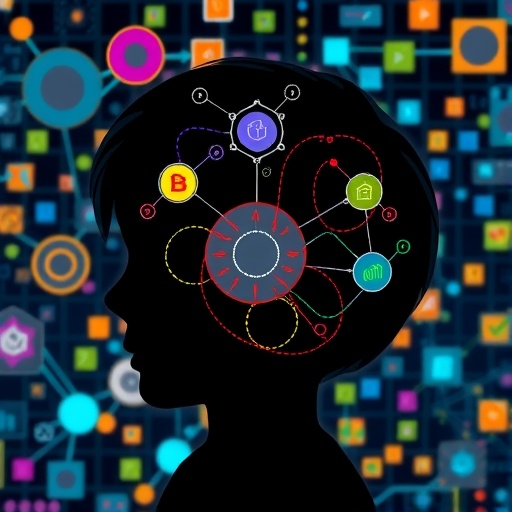In recent years, the landscape of educational psychology has undergone a significant transformation, with a particular focus on cognitive rehabilitation strategies for children facing learning disabilities. Among these disabilities, dyscalculia has emerged as a prominent challenge, impacting students’ ability to comprehend and manipulate numerical concepts. This condition not only hinders academic performance but also affects self-esteem and motivation. As researchers delve deeper into innovative therapeutic approaches, findings from the study conducted by Hamidi and Beygmohammadloo provide promising insights into the efficacy of computer-based cognitive rehabilitation in enhancing visual-spatial working memory amongst dyscalculic elementary school pupils.
The study presents a compelling case for integrating technology within the cognitive rehabilitation framework. By utilizing computer-based methodologies, educators and therapists can create dynamic learning environments that cater specifically to the cognitive needs of children with dyscalculia. This study sets the stage for a deeper understanding of how these technological interventions can play a pivotal role in transforming the educational experiences of dyscalculic individuals. The authors emphasize the need for comprehensive assessments that help tailor interventions to meet the unique requirements of each student, thereby optimizing their capacity to learn and thrive.
Visual-spatial working memory is crucial for success not just in mathematics, but across all subjects where organizational and spatial reasoning skills are needed. Dyscalculic children often struggle with retaining and processing visual information, which can significantly impede their learning process. The innovative computer-based approach proposed by Hamidi and Beygmohammadloo seeks to improve these essential cognitive functions through targeted exercises and engaging interfaces. As students interact with programs designed to challenge their visual-spatial skills, they simultaneously build confidence and resilience as effective learners.
One of the standout features of this research is its recognition of the role of motivation in cognitive rehabilitation. Traditional methods may often fall short if a learner does not feel engaged. The integration of gamification—turning educational tasks into interactive games—within computer-based programs serves not only to sustain interest but also to foster a competitive spirit among peers. Engaging with these digital platforms allows students to track their progress visually, giving them a sense of accomplishment as they witness their improvements in real-time. This feedback loop is crucial in maintaining motivation and encourages sustained effort in overcoming educational hurdles.
The results derived from the study highlight that children who participated in computer-based cognitive rehabilitation exhibited marked improvements in their visual-spatial working memory. This improvement was not merely a statistical anomaly but reflected a genuine advancement in the students’ abilities to comprehend and manipulate spatial information as related to mathematical concepts. Such findings underscore the potential for this type of intervention to act as a highly effective educational tool.
Moreover, the implications of Hamidi and Beygmohammadloo’s study extend beyond individual improvement. These findings may also contribute to larger discussions about inclusivity in educational settings. With robust evidence supporting the effectiveness of technological interventions, educators are encouraged to adopt these strategies as part of their broader pedagogical frameworks. This meets the dual need for helping those who struggle while simultaneously promoting resource engagement that expands the learning experience for all students.
However, while the study presents a promising avenue for cognitive rehabilitation, it also sparks a conversation about the need for continued research in this area. The rapid pace of technological advancement means that digital tools are continually evolving, emphasizing the necessity for ongoing evaluations of efficacy and applicability. Future studies can build on this work to explore not just visual-spatial working memory, but also other cognitive domains affected by dyscalculia and similar learning disabilities.
The significance of collaborative efforts between educators, psychologists, and technology developers cannot be understated. By working together, these professionals can design and implement comprehensive cognitive rehabilitation programs that leverage the strengths of each field. As this partnership grows, so too does the possibility for innovative solutions that can revolutionize how we approach learning disabilities.
Ultimately, Hamidi and Beygmohammadloo’s study not only sheds light on effective strategies for supporting dyscalculic pupils but also fosters a broader awareness of the role that cognitive rehabilitation can play in educational settings. The integration of computer-based interventions embodies a forward-thinking approach that, if embraced, could ensure that every child, regardless of their challenges, has the opportunity to succeed in their academic pursuits. As this body of research expands, it has the potential to inspire an educational paradigm shift toward inclusivity, resilience, and empowerment for all students.
As we look to the future, the exciting research led by Hamidi and Beygmohammadloo paves the way for more explorations of how technology can revolutionize cognitive rehabilitation practices. The interplay between cognitive research and technological advancement remains a promising frontier for improving the educational experiences of countless children. As more evidence accumulates, educators will be tasked with integrating these new methodologies into their teachings, ensuring that future generations can benefit from these innovative solutions that address the challenges of learning disabilities head-on.
In summary, the findings present a compelling case for the adoption of computer-based cognitive rehabilitation techniques within elementary education for students with dyscalculia. As researchers like Hamidi and Beygmohammadloo shine a light on the effectiveness of these approaches, the educational community is called to action—embracing technology not merely as a tool but as a transformative ally in the quest for a more understanding and adaptive educational environment.
Subject of Research: The Effect of Computer-Based Cognitive Rehabilitation on Visual Spatial Working Memory in Dyscalculia Elementary Pupils
Article Title: The Effect of Computer-Based Cognitive Rehabilitation on Visual Spatial Working Memory in Dyscalculia Elementary Pupils
Article References:
Hamidi, F., Beygmohammadloo, M. The Effect of Computer-Based Cognitive Rehabilitation on Visual Spatial Working Memory in Dyscalculia Elementary Pupils. IJEC (2025). https://doi.org/10.1007/s13158-025-00428-2
Image Credits: AI Generated
DOI: 10.1007/s13158-025-00428-2
Keywords: Dyscalculia, Cognitive Rehabilitation, Visual Spatial Working Memory, Computer-Based Intervention, Educational Psychology, Learning Disabilities, Gamification, Pedagogy.




